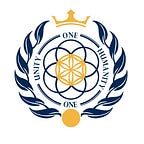NASA to Decide if a New Mission to Saturn’s Moon, Titan Will Fly in 2025
A group of experts are working on a proposed mission called Dragonfly. On this mission, the scientists want to combine terrestrial drone technology and instruments honed by Mars exploration to investigate the complex chemical reactions happening on Saturn’s largest moon, Titan. Later in 2019, NASA will need to decide between this mission or a mission to gather samples from a comet.
Melissa Trainer, a deputy principal investigator with the Dragonfly mission and a scientist at NASA, said to Space.com that this is not only a very exciting concept with fascinating and compelling science but it’s also a doable mission that is feasible from an engineering standpoint.
If selected, Dragonfly would try to launch in 2025 and arrive at Titan in 2034. Titan is oddly similar to our planet for a strange moon so far away. On Earth, sunlight powers organic life growing in fields and forests; the same sunlight causes chemical reactions in Titan’s upper atmosphere that results in large organic molecules which pour down on the moon’s surface, very much like rainwater on Earth. While our planet’s landscape is made of rock covered in places by water, Titan’s landscape is composed of water ice covered in areas by organic compounds.
We know these traits about Saturn’s largest moon because of data collected by the Cassini mission to Saturn’s system and the Huygens probe that travelled with Cassini and touched down on Titan in 2005. Those two spacecraft completely reshaped the ideas scientists’ has about this moon.
As Elizabeth “Zibi” Turtle, the principal investigator for Dragonfly and a planetary scientist at the Johns Hopkins University of Applied Physics Laboratory told Space.com, experts didn’t know how Titan worked as a system before Cassini arrived. We had enticing hints, but Cassini and Huygens really took it from a mysterious moon to a place that is incredibly familiar. Cassini really showed us Titan as a world and how it works and the different processes that are acting out there.
Unfortunately, Cassini was unable to get a good view of the surface through the moon’s thick atmosphere, and only hours after the Huygens probe touched down, it ran out of battery power. So, if all goes well, Dragonfly would be able to explore dozens of sites throughout two Earth years. Plus, some parts of the suggested mission aren’t as hard as one might expect.
For example, landing on Titan isn’t as hard as it might seem. Trainer, who also works with the Curiosity rover on Mars, remembers the so-called “7 minutes of terror” during that rover’s action-packed landing, as the spacecraft struggled to slow itself fast enough to touch down lightly. She explained that compared to that, landing on Titan is just this leisurely, gentle float down to the surface and takes over 2 hours due to the dense atmosphere.
Trainer compared Titan’s atmosphere to a pillow, stating that combined with the low gravity on the moon (about a seventh the strength of Earth’s) makes putting an aircraft on a distant moon much more doable. Dragonfly will have a rotor-copter design that will allow it to lift itself off the surface and fly away using the nuclear power source that NASA has available for this type of mission.
But incorporating extraterrestrial drone technology is only a means to an end, not the final objective. Trainer said the truth is the mission is really about spending most of the time on the surface. The mission is really a landed package and a science laboratory, where most of the science is done on the ground, and then they fly to relocate and to get some data on the surface. After they move to a new place and they do more landed science.
That science will address the chemistry on Saturn’s largest moon. Scientists know that the moon is home to large quantities of organic compounds, but Cassini and Huygens didn’t collect enough data to clarify the details of the planet’s chemistry. Dragonfly would be able to detect precise organic compounds, so scientists could figure out just how close Titan’s molecules are to those that terrestrial biology depends on.
Turtle explained that the Dragonfly mission is really about understanding prebiotic chemistry, with questions like what happened to get from chemistry to biology?. Turtle added that we couldn’t study that on Earth since biology has kind of overprinted everything, but Titan is actually the place that is most similar to early Earth in the solar system.
Scientists have tried to mimic Titan in the laboratory as a way to test what compounds the ingredients and conditions they replicate produce. Those experiments have had tantalizing results. For example, the reactions can result in amino acids, which are the building blocks of proteins — but they can never run indefinitely. Trainer said that in the laboratory, they’re always limited by time whereas Titan has been doing the same thing for millions and millions of years.
It’s now up to NASA to decide if Dragonfly takes flight. The team behind the mission submitted a detailed concept report in December and is expecting a decision from the agency this summer. The team members believe they’ve made a compelling case for both the science this mission can accomplish, as well as its feasibility.
Learn more on Asgardia.Space
